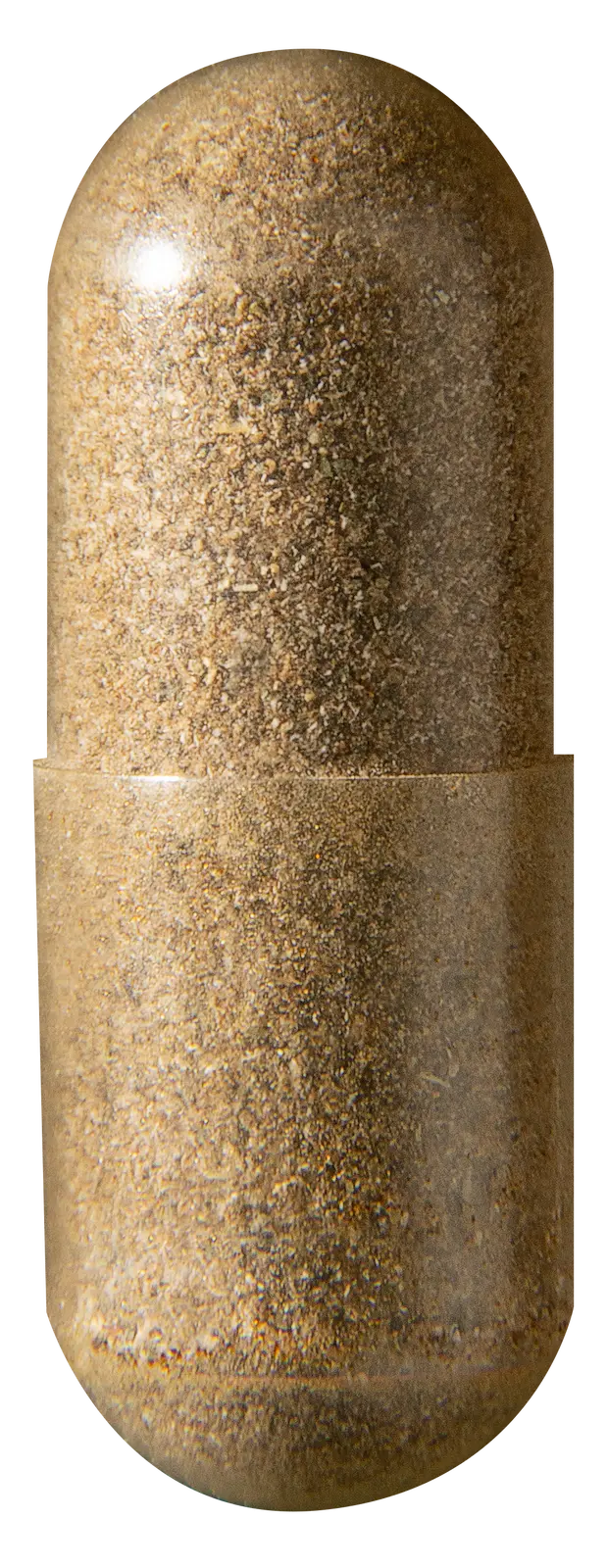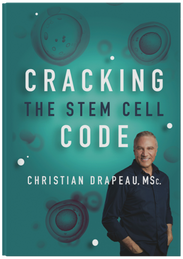August 19, 2024 / HONE Health / -- On their never-ending quest for the proverbial fountain of youth, biohackers and celebrities alike have latched onto stem cell anti-aging therapies. Do these treatments, reportedly used by longevity influencer Bryan Johnson and actors John Cleese and William Shatner, have any merit? Can they really turn back the hands of time and help you look and feel more youthful?
A harsh, but also beautiful fact of life is that we age. We say goodbye to the emotional angst of our teens and 20s, only for our joints begin to express their angst via aches, pains, and creaks. Ultimately, aging happens because of various inflammatory processes that fall under the umbrella term inflammaging. Inflammaging affects our stem cells, the body’s innate repair system. Stem cell therapy, although still controversial as the research is in its infancy, may hold promise for reducing the impact of inflammaging, thereby boosting longevity. “As we age the number of circulating stem cells decreases,” says stem cell scientist Christian Drapeau, M.S.c. By the age of 30, he adds, the decline reaches about 90 percent. “This reduction means that at some point in our 30s, we don’t have enough stem cells to keep up with cellular loss, and that’s when aging begins,” he says.
About the Experts
Christian Drapeau, M.S.c., is a stem cell scientist and the founder and chief science officer at Stemregen. He is also the bestselling author of Cracking the Stem Cell Code. Drapeau is credited as first proposing and publishing the hypothesis that stem cells are the body’s repair system. Fouad Ghaly, M.D., is the founder of the Ghaly Center for Regenerative Medicine in California. He focuses on stem cell research and regenerative medicine therapies in his practice.
What Are Stem Cells, Anyway?
Stem cells are unique cells found in nearly all bodily tissues. They help keep tissue healthy and repair tissue that’s damaged.Though we still have a long way to go, researchers have made substantial progress in stem cell research in the 21st century. “Historically, stem cells were primarily recognized as precursors to blood cells, including white and red blood cells, as well as platelets.”But, as Drapeau notes, the early 2000s led to a promising discovery. “Stem cells are remarkable cells with the unique ability to renew and differentiate into any cell type in the body throughout a person’s lifetime,” Drapeau says. Their ability to differentiate means they can convert or morph. This enables them to aid in the repair and regeneration of any bodily organ (2). No other cells in the body have stem cells’ natural abilities (1).“This groundbreaking finding has propelled stem cells into today’s therapeutic limelight and suggested new applications,” Drapeau says.
How stem cells function
Stem cells have two important functions: to make more stem cells and to convert into other types of cells that do different jobs (3).Let’s say you seriously tweak your ankle on a trail run. The injured tissue sends signals to your bone marrow to release stem cells, Drapeau explains. Circulating stem cells will increase 3- to 10-fold (4). “The stem cells move to the site of damage, multiply, and transform into the necessary cells to repair the tissue,” he adds.Stem cells also replace cells we naturally lose every day in all our organs and tissues (5). “To stay healthy, we need to constantly replace these lost cells, and that’s the role of stem cells,” Drapeau says.
Current application for stem cell therapies
You’ve likely heard of stem cell therapies to treat diseases. Stem cell therapy is currently approved by the U.S. Food and Drug Administration (FDA) for treating certain cancers and disorders that affect the blood and immune system.Stem cell treatments have different processes, depending on the condition. Blood cancer treatment, for example, may involve a stem cell transplant. In these cases, healthy stem cells are harvested from either the blood or bone marrow of a donor or the patient, and then transplanted into the patient (6).
Can Stem Cells Reverse Aging?
The number of circulating stem cells available to help us repair and renew tissue is crucial for our health and vitality (7). And those stem cells decline with age. Where things get tricky with this type of treatment is who gets to have access to them, as they are extremely expensive.“Currently, stem cell treatments for anti-aging are mostly accessible to the wealthy,” Drapeau says. However, endogenous stem cell mobilization may be more accessible. “This process involves stimulating the release of one’s own stem cells from the bone marrow, rather than relying on injections to increase circulating stem cells,” he says.
How a stem cell transplant for anti-aging works
Stem cell transplants are not currently available for anti-aging, at least not in the sense that such transplants are available in the United States to treat certain immune system conditions, blood disorders, or cancers.However, some clinics in the country do offer therapies that harness stem cells from one’s own body. Regenerative medicine specialist Fouad Ghaly, M.D., explains one of the regenerative therapy options he offers at his clinic in California.“I can take fat from a man or a woman, isolate the stem cells, activate the stem cells, and inject them into the body,” he says. The stem cells go to the damaged areas and create “a field of regeneration,” he adds. (Critics of stem cell research say that stem cells may migrate to areas on the body that don’t need them.)But not many practitioners in the U.S. offer the treatment. When you read about biohackers and celebrities getting stem cell therapies, they probably traveled elsewhere to get it. Bryan Johnson, for example, said in a post on X that he participated in a clinical trial in the Bahamas in which bone marrow-derived stem cells were injected into his knees, shoulders, and hips.
Age-Related Issues Stem Cell Therapy May Help
Over time, inflammaging and other factors can lead to age-related diseases including type 2 diabetes, cardiovascular disease, neurodegenerative diseases, cancer, musculoskeletal disorders, sexual dysfunction, and more (8).Age-related diseases are linked to a reduction in stem cells. “People with conditions affecting the heart, liver, kidneys, pancreas, lungs, and cardiovascular system, as well as those with high blood pressure or erectile dysfunction typically have less than 50 percent of the circulating stem cells found in healthy individuals of the same age,” Drapeau says.Not everyone develops these diseases as they age. The conditions are simply more prevalent in older populations. Lifestyle, environmental, and genetic factors all play a role in disease development (9).“Harnessing the power of endogenous stem cell mobilization—releasing your own stem cells—or utilizing stem cell treatments can significantly impact age-related health issues,” Drapeau says.
Why Stem Cell Treatments Are Controversial
Over the past five years or so, the FDA, the Centers for Disease Control and Prevention (CDC), and the National Institutes of Health (NIH), have repeatedly warned the public about clinics and companies that market stem cell products or therapies (10, 11, 12).Stem cell products and treatments are not currently approved to treat any orthopedic conditions, neurological disorders, cardiopulmonary disorders, chronic pain, fatigue, macular degeneration, or autism, according to the FDA (10).The federal agency also warns of severe health issues that have come about from unapproved therapies. “FDA has received reports of blindness, tumor formation, infections, and more … due to the use of these unapproved products,” the agency states (10). According to a 2017 report, patients who received stem cell eye injections at a Florida clinic became blind shortly after treatment (13).And while the CDC and NIH both remain hopeful about stem cell therapy’s potential to treat various medical conditions and diseases, further research is needed to rule out acute and long-term health complications (11, 12).
Where Stem Cell Research Is Heading
Research around stem cell therapy’s capabilities have, in many ways, only just begun (14). However, Drapeau and Ghaly say the evidence is growing around how stem cell therapies can be used strategically to combat aging and support longevity.“It will become clear that supporting stem cell function is the first step in addressing any type of tissue damage or degeneration,” Drapeau says. “As research progresses and clinical evidence accumulates, endogenous stem cell mobilization is likely to become standard practice for treating a wide range of conditions, from cardiovascular diseases to musculoskeletal injuries.”But more than that, stem cells could potentially be used for organ replacement. “Can we induce a regular cell to become a liver? Yes,” Ghaly says. “Can we induce it to become a kidney? Yes. So now there will come a day when they can manufacture organs.”Researchers have already regenerated fully functional urinary bladder tissue in a nonhuman primate by using stem cells from the animal’s bone marrow (15). The research serves as a preclinical model for humans.Ultimately, stem cell research may shape how we treat and prevent age-related diseases, how we repair damaged tissue and organs, and how we recover from illness and injury. Such changes could help us theoretically feel and look better, despite our chronological age. By using regenerative therapies, such as those related to stem cells, we may even be able to extend our lifespan, which is how long we live, and our healthspan, which is how long we generally feel healthy and have good quality of life.
About the Author
Jennifer Chesak is a freelance science and medical journalist and editor who covers the pandemic, chronic health issues, medical rights, healthcare, and the scientific evidence around health and wellness trends. Her work has appeared in Washington Post, Prevention, Healthline, Health, The Daily Beast, Runner's World, Greatist, Real Simple, and more.





